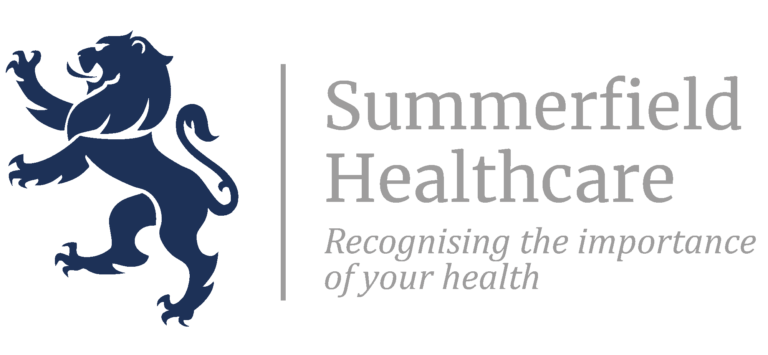Heart disease – what is it and how can we treat it?
March 19 2021 | News

Heart disease and circulation problems are very common and many people will be aware of the conditions and potential impact on lives – but could YOU recognise the symptoms and do you know what treatments are available?
When in doubt about anything medical, it’s always a good idea to seek the thoughts of an expert and at Summerfield Healthcare we have one of the best in Dr Vivake Roddah, our Medical Director.
Dr Roddah agreed to talk us through the details of heart and circulation problems.
He said:
“Heart disease is a complex subject and today I would like to concentrate on coronary artery disease which can lead to angina or heart attack – but first I think it necessary to share some depressing statistics.
Were you aware that:
More than six million UK residents are living with some form of heart or circulation problem; these problems account for 27% of deaths across the UK each year; about 225 people will be admitted to hospital every day with a heart attack; ultimately about 1 in 8 men die of heart disease and 1 in 13 women – that’s twice as many as die of breast cancer.
But there is hope and progress is being made. In 1961 the survival rate from a heart attack was about 30%, today it is over 70%.
How do heart problems begin?
The heart is a pump, put simply, which needs lubrication to keep working. This is supplied by three large blood vessels surrounding it, providing the cardiac muscles with the oxygenated blood they need.
When these arteries become blocked with fat deposits, known as atheroma, the blood supply lessens and can cause chest pains, or angina, or, with severe or sudden blockage, a heart attack.
If you develop angina it will typically start with a belt-like chest tightness associated with exertion. When you stop exercising the pain settles, only recurring when you restart exercise. It’s not always that typical, though. Some people suffer jaw or neck pain and a patient with angina may first visit a dentist believing they have a troublesome tooth.
With a heart attack the symptoms are generally more severe – often with crushing persistent chest pain, breathlessness, sweating and possibly collapse. To make things more difficult, a minority of people have very few or no symptoms with a heart attack, which makes diagnosis very tricky.
Seek medical help swiftly
If you believe you are showing symptoms, the sooner you see a doctor the better. Initial action may include a standard ECG tracing or maybe an exercise ECG where the same tracing is done for up to 12 minutes as you exercise on a treadmill. Other ultrasounds and scans may help identify the degree of heart disease.
Treatment of coronary artery disease usually involves drug therapy, typically aspirin or similar to thin the blood and other drugs that improve the blood supply to the heart muscles. In recent years Percutaneous Coronary Intervention (PCI) has developed, meaning diseased coronary arteries can be accessed via a blood vessel in the arm or groin and either ‘dyno-rodded’ to clear obstruction or stented – where a small internal sleeve opens up a diseased segment of the artery.
Where cases are more severe, bypass surgery (CABG) may be needed. This involves chest surgery and the direct replacement of one or more of the three main cardiac arteries. If you have heard about someone having a triple bypass, it means all three arteries are replaced.
As ever, if you develop symptoms seek help quickly. Over recent years there have been great advances in the investigation and treatment of heart disease and generally, with most cardiac problems, it’s possible to achieve a good recovery.”
